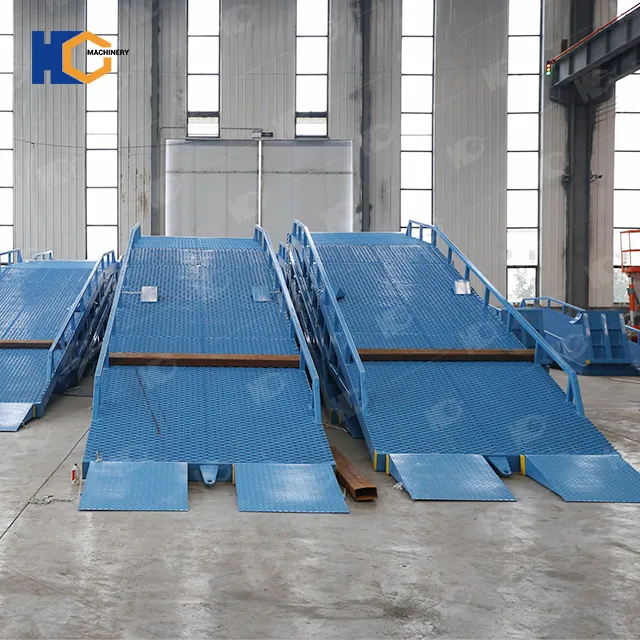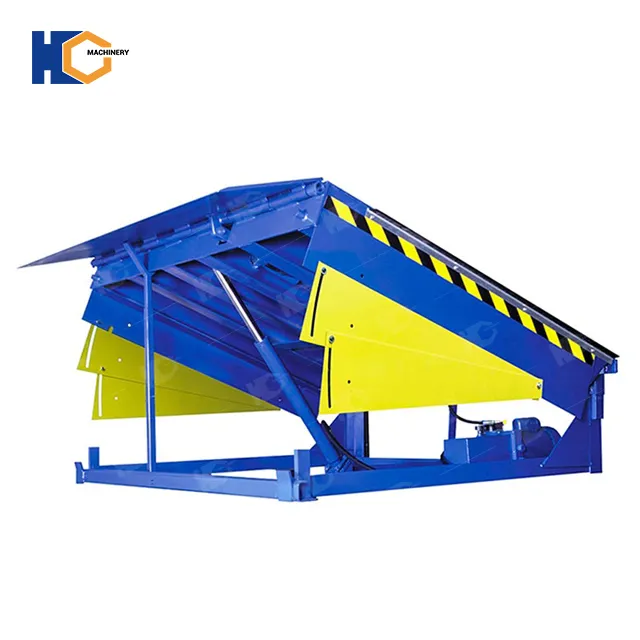A stationary loading dock ramp, also known as a dock board or dock plate, is a fixed piece of equipment designed to bridge the gap between a loading dock and a truck, trailer, or railcar. These loading ramps facilitate the smooth and safe transfer of goods by providing a level surface over which forklifts, pallet jacks, and other material handling equipment can travel. Here are key features, types, applications, and benefits of stationary loading dock ramps.
Types of Stationary Loading Dock Ramps:
Dock Boards: Portable and often used for lighter loads. Typically include curbs or rails to guide material handling equipment.
Dock Plates: Similar to dock boards but usually made of lighter materials like aluminum. Ideal for pedestrian use and lighter equipment.
Edge-of-Dock (EOD) Levelers: Permanently mounted to the dock face and designed to handle small height differences between the dock and truck bed.
Pit-Mounted Dock Levelers: Installed in a pit at the edge of the dock, providing a smooth transition and often featuring hydraulic or mechanical operation for adjusting height.
Applications:
Warehousing: Facilitates efficient loading and unloading of goods from trucks and trailers.
Manufacturing: Ensures smooth transfer of materials and products between production areas and shipping/receiving docks.
Retail: Helps in the distribution of products from delivery trucks to storage or retail floors.
Distribution Centers: Critical for operations where quick and efficient movement of large volumes of goods is essential.
Considerations for Choosing a Loading Dock Ramp:
Load Capacity: Ensure the ramp can support the weight of the heaviest loads it will encounter.
Dock and Vehicle Height: The ramp should accommodate the height difference between the dock and vehicle.
Material Handling Equipment: Choose a ramp that is compatible with the types of equipment used, such as forklifts or pallet jacks.
Frequency of Use: Higher frequency use may require more durable materials and features to ensure longevity and reliability.
Environmental Conditions: Consider factors like weather, temperature, and exposure to corrosive substances when selecting materials and finishes.
Overall, stationary loading dock ramps are essential tools for improving the efficiency and safety of loading and unloading operations in various industrial and commercial settings.

